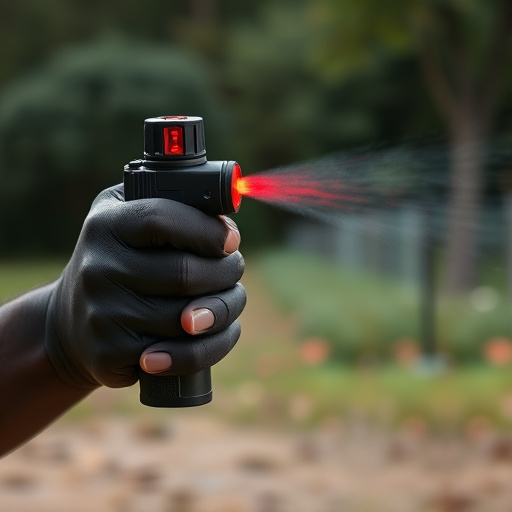Pepper spray exposure causes immediate symptoms like eye pain, tearing, coughing, and breathing difficulties that can last up to several minutes. Treatment involves flushing with water for at least 15 minutes, followed by medical attention if symptoms persist beyond 24 hours. The pepper spray exposure treatment time varies based on severity and individual sensitivity, emphasizing the importance of quick action and professional guidance.
In today’s world, personal protection is paramount. One effective tool gaining popularity is pepper spray, a chemical irritant designed to disable attackers temporarily. This article delves into the science behind pepper spray exposure, exploring its symptoms and treatment time. We also dissect the effectiveness of various personal protection devices and emphasize crucial post-exposure care measures. Understanding these aspects can significantly enhance individual safety and well-being, especially in high-risk environments.
- Understanding Chemical Irritants and Their Effects
- Pepper Spray Exposure: Symptoms and Treatment Time
- Effective Personal Protection Devices and Post-Exposure Care
Understanding Chemical Irritants and Their Effects
Chemical irritants, like pepper spray, are designed to cause discomfort and temporarily disable an attacker, providing crucial time for escape or defense. Understanding their effects is paramount in personal protection. When exposed to a chemical irritant, the body reacts to the foreign substance, leading to symptoms such as tearing, itching, coughing, and difficulty breathing. These reactions occur within seconds and can last for several minutes, depending on the type of irritant and exposure time.
Treatment for pepper spray exposure typically involves immediate flushing of the affected area with water for at least 15 minutes, ensuring thorough cleaning. This step helps to dilute and remove the irritant from the skin and eyes. Seeking medical attention is advised if symptoms persist or worsen beyond the initial exposure treatment time, as some individuals may be more sensitive or suffer from underlying conditions that require professional care.
Pepper Spray Exposure: Symptoms and Treatment Time
Pepper spray exposure can cause a range of symptoms, typically appearing within seconds to minutes after contact with the eyes, skin, or respiratory system. These symptoms include severe pain, tearing, redness, and irritation of the eyes; difficulty breathing or coughing; and in some cases, dizziness, nausea, and headaches. The intensity and duration of these symptoms can vary depending on the concentration of capsaicin, the active ingredient in pepper spray, and the sensitivity of the individual exposed.
Treatment for pepper spray exposure typically involves immediate washing of affected areas with plenty of water to dilute the chemical. In case of eye irritation, flushing with clean water for at least 15 minutes is recommended. Medical attention should be sought if symptoms persist or worsen beyond 24 hours. There are also over-the-counter medications and home remedies that can help alleviate discomfort during recovery, which generally takes anywhere from a few hours to several days, depending on the severity of exposure.
Effective Personal Protection Devices and Post-Exposure Care
Effective Personal Protection Devices (PPDs) are designed to neutralise or deter potential threats, offering crucial protection in high-risk environments. One widely used PPD is pepper spray, which acts as a chemical irritant, causing temporary blindness and respiratory distress in assailants. The key to its effectiveness lies in the correct usage and understanding of exposure treatment time.
Post-exposure care is vital after any interaction with a chemical irritant like pepper spray. Following exposure, individuals should immediately wash their face and eyes with plenty of water for at least 15 minutes to dilute the irritant. Seeking medical attention is recommended, especially if symptoms persist or severe reactions occur. The exposure treatment time varies based on factors such as the amount of spray, duration of contact, and individual sensitivity, making prompt action and professional guidance essential for optimal recovery.
Chemical irritants, particularly pepper spray, can cause significant discomfort and temporary incapacitation. Understanding the effects of exposure and implementing proper post-exposure care is crucial for effective personal protection. Knowing the symptoms and treatment time for pepper spray exposure can make all the difference in minimizing distress and enabling a swift recovery. Always opt for reliable personal protection devices and ensure comprehensive aftercare to stay safe and protected.
